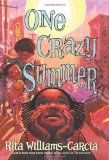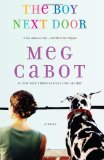 Ice
Ice
by Sarah Beth Durst
Margaret K. McElderry Books (Simon & Schuster), New York, 2009. 308 pages.
Starred Review
When Cassie was small, when her Dad was away from the station, Gram would tell her a fairy tale:
“Once upon a time, the North Wind said to the Polar Bear King, ‘Steal me a daughter, and when she grows, she will be your bride.’…
“And so, the Polar Bear King kidnapped a human child and brought her to the North Wind, and she was raised with the North Wind as her father and the West, South, and East Winds as her uncles….
“When the Polar Bear King came to claim his bride, she refused him. Her heart, she said belonged to another….
“Knowing the power of a magic promise, the North Wind’s daughter sought to counter it with her own bargain. ‘Then I will make a promise to you,’ the North Wind’s daughter replied. ‘Bring me to my love and hide us from my father, and when I have a daughter, she will be your bride.’ And so, the Bear carried the North Wind’s daughter to her human husband and hid them in the ice and snow….
“In time, the woman had a child. Passing by, the West Wind heard the birth and hurried to tell the North Wind where his daughter could be found. With the strength of a thousand blizzards, the North Wind swooped down onto the house that held his daughter, her husband, and their newborn baby. He would have torn the house to shreds, but the woman ran outside. ‘Take me,’ she cried, ‘but leave my loved ones alone!’
“The North Wind blew her as far as he could — as far as the castle beyond the ends of the world. There, she fell to the ground and was captured by trolls.” Cassie heard the bed creak as Gram stood. Her rich voice was softer now. “It is said that when the wind howls from the north, it is for his lost daughter.”
Cassie blinked her eyes open. “And Mommy is still there?”
Gram was a shadow in the doorway. “Yes.”
After this surprising prologue, the book opens the day before Cassie’s eighteenth birthday. Cassie remembers Gram’s story when she tracks down the biggest polar bear she’s ever seen. She smiles to think that if the Polar Bear King existed, this is what he’d look like. She loads her tranquilizer gun so she can tag and measure him.
And then he disappears.
She stays out late trying to figure out how she missed his trail, and is ready for a scolding from her father, back at the Arctic research station. What she isn’t prepared for is his reaction to her story of the giant disappearing polar bear. He tells her she must leave the station right away, fly to Fairbanks to stay with her grandmother. He says the station can no longer be her home.
When she wakes at three a.m. to the sound of the plane that’s come to take her away, she realizes how serious her father is. Gram is on the plane and she tells Cassie the fairy tale was Gram’s way of telling Cassie the truth. Her mother was the daughter of the North Wind. She bargained with the Polar Bear King, and now, on her eighteenth birthday, he’s coming for Cassie.
Cassie is incredulous, but also feels hurt and betrayed that either her father or her grandmother didn’t tell her the truth. She doesn’t want to leave her home. When Gram gives her time to get ready for the flight, Cassie goes outside and calls the Polar Bear King. He comes.
Now Cassie makes a bargain with the Polar Bear King. If he frees her mother from the trolls, she will marry him.
So begins this striking and original retelling of “East of the Sun, West of the Moon.” I’ve already read two novelized versions that I loved: East, by Edith Pattou, and Sun and Moon, Ice and Snow, by Jessica Day George. This one is very different, because it sets the story in the modern day.
I loved the way every chapter begins with Cassie’s GPS readings. They go haywire when the Polar Bear King brings her to his castle a mile north of the North Pole.
Bear is a munaqsri with the task of transferring and transporting the souls of polar bears who die into polar bears who are born. His heart breaks when he is not fast enough to be present at a polar bear birth, and the baby is stillborn.
I was delighted that Cassie comes up with a job, a way she can help, using data from the research station. This is not a heroine who is happy to sit alone in a magical castle! She finds a way to work side by side with Bear.
But what I loved most about the book was how it showed Cassie falling in love with Bear. She teases him and cares about him and sees his love for the polar bears. We can see her love for him blossoming on the page.
As in the fairy tale, he comes to her in the shape of a man at night, and on the first night, Cassie swings an ax at him! But as she comes to care about him, she allows him to sleep in the room, and then later she kisses him. Finally, she gives him a wedding night.
And my paragraph there is just about as explicit as the book gets. It’s beautifully romantic without having to go into detail. As in the fairy tale, though, her husband only comes to her in the shape of a man at night, and doesn’t want her to see his face.
When she breaks that taboo, tragedy strikes.
Cassie has grown up on the Arctic research station, so we believe that she is capable of surviving when she sets out to rescue her husband from the troll castle east of the sun and west of the moon.
This is another book I’d like to get into the hands of teens who love the romance in Twilight, because here, too, we have a story of One True Love. We have a heroine who is devastated by the loss of her beloved and is willing to do anything to bring them back together.
Back when the Harry Potter books were at the height of their popularity, my husband had the insight to say that he believed it was so popular because of the aspect of the chosen child. Everyone would like to be told: Here is your destiny. This is what you were born to do.
I think Twilight‘s popularity is similar. We wish that True Love were as simple as the “imprinting” Stephenie Meyer’s werewolves experience. I think that girls, at least, long to experience love that they feel is their destiny, to find their One True Love. And, take it from me, there’s a real satisfaction to calling the rival who steals away their husband, the Troll Queen!
I admit that I always love novelizations of fairy tales. I honestly thought that I’d read too many versions of “East of the Sun, West of the Moon” to be impressed by another, but I loved this. Beautiful writing and a beautiful story. A wonderfully romantic tale of True Love you would go past the ends of the earth for.
Buy from Amazon.com
Find this review on Sonderbooks at: www.sonderbooks.com/Teens/ice.html
Disclosure: I am an Amazon Affiliate, and will earn a small percentage if you order a book on Amazon after clicking through from my site.
Source: This review is based on a library book from the Fairfax County Public Library.









